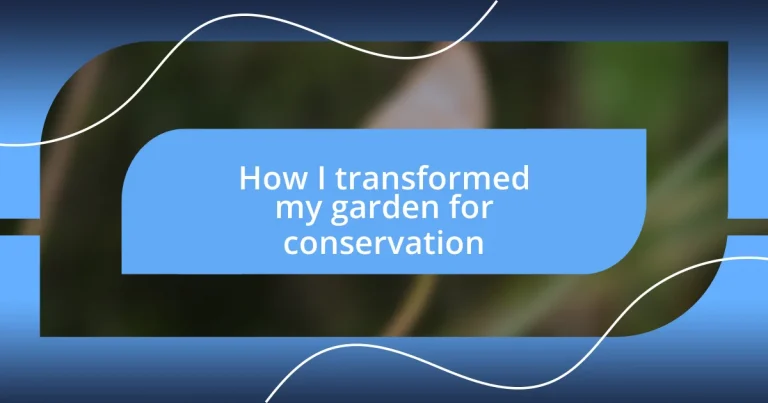Key takeaways:
- Transitioning to a conservation-focused garden enhances biodiversity and fosters connections with local wildlife.
- Implementing sustainable practices, such as using native plants and rainwater harvesting, significantly supports environmental health.
- Sharing conservation successes with the community inspires others and promotes a shared commitment to environmental stewardship.
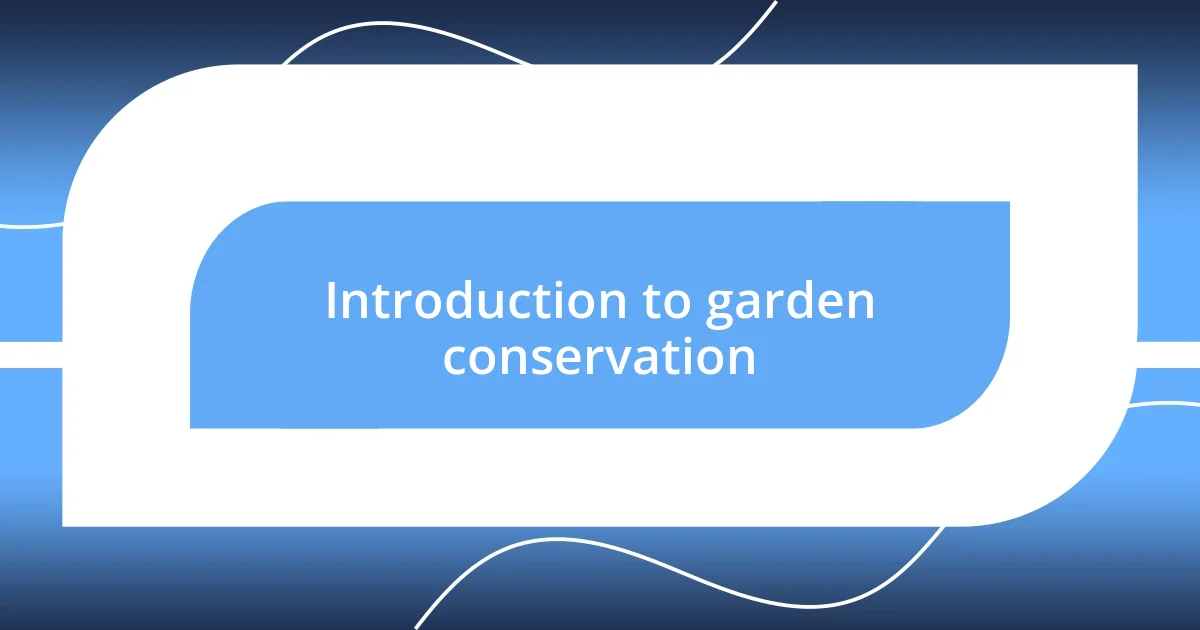
Introduction to garden conservation
Garden conservation is more than just a trend; it’s a commitment to preserving our planet’s biodiversity right in our backyards. I remember feeling a sense of urgency when I learned that gardens could play a crucial role in supporting local wildlife. Have you ever noticed how many beautiful creatures flutter or scurry through even the smallest patches of green?
When I transitioned my garden into a conservation haven, I didn’t just change the plants; I transformed my perspective. Watching bees busily pollinate my flowers filled me with joy and pride. It struck me how much life can thrive when we offer our little spaces as sanctuaries.
Understanding that each plant and insect contributes to a larger ecosystem made my gardening journey profoundly rewarding. It’s almost like a dance—each element in harmony with the others. Have you thought about how your own garden could become a refuge for nature? It’s an adventure worth embarking on, and you’d be amazed at the difference you can make.
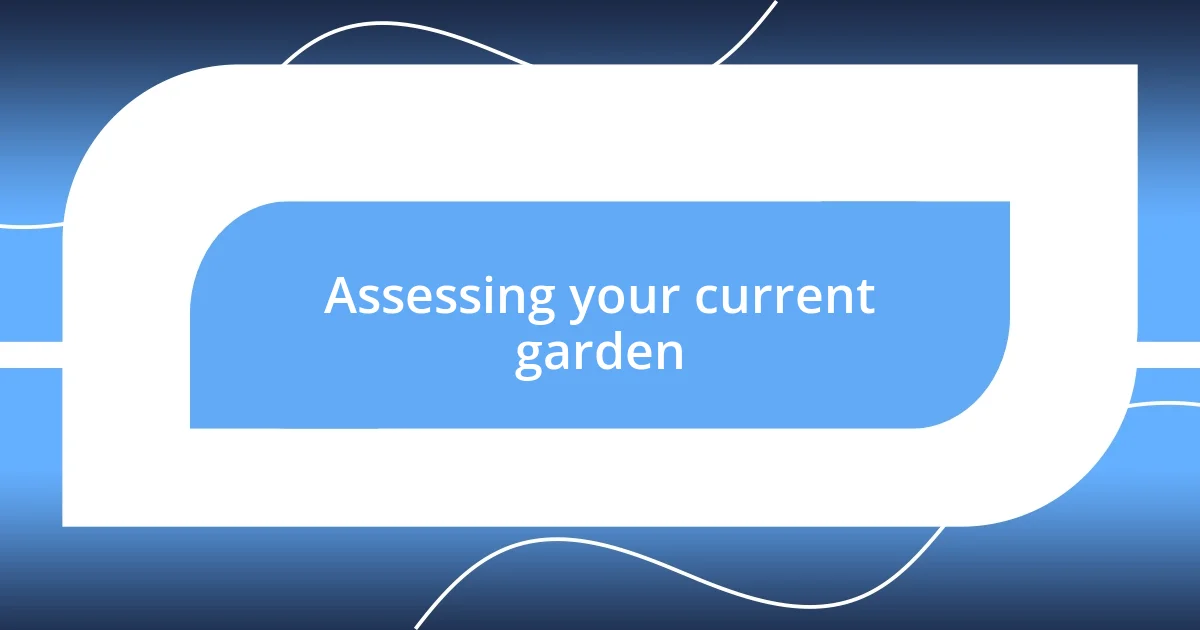
Assessing your current garden
Before diving into transforming your garden for conservation, it’s essential to take a close look at what you currently have. This assessment involves more than just noting the plants; it means understanding the existing wildlife and how your current layout affects local ecosystems. I distinctly remember walking through my garden with a notebook, jotting down what I saw and heard. The rustling leaves, buzzing bees, and the occasional chirping of birds hinted at the hidden life present, guiding me toward what I needed to change.
Here’s a simple checklist to help you assess your garden:
- Identify existing plants: Note their types and whether they are native or non-native.
- Observe wildlife: Take note of the insects, birds, and mammals that visit or live in your garden.
- Assess soil health: Check for signs of erosion or compaction and consider if you need to improve quality.
- Check water sources: Look for natural water runoff patterns or consider adding a birdbath or small pond.
- Evaluate structure and layout: Is your garden open and welcoming, or does it have dense areas that might deter wildlife?
Through this process, I felt a deeper connection to my space, and it set the stage for meaningful changes. Having a clear snapshot of my garden not only fuels transformation but also instills a sense of responsibility to the creatures that rely on it.
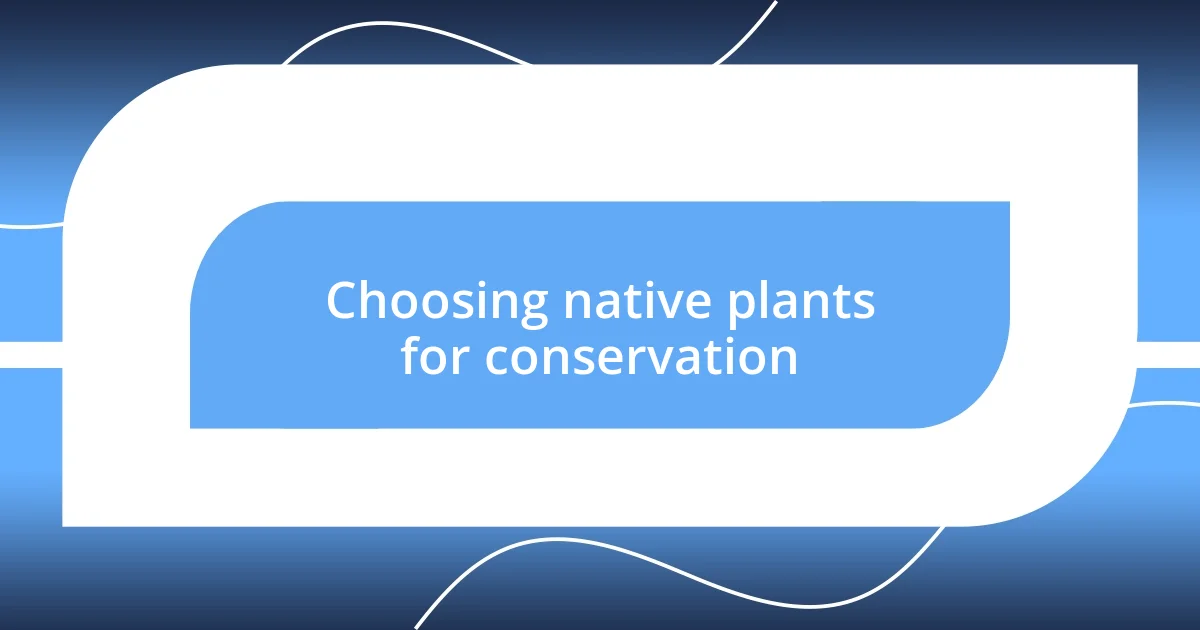
Choosing native plants for conservation
Choosing native plants for conservation is a powerful step in supporting local ecology. I discovered that native plants require less water and maintenance, making them an environmentally sensible choice. When I planted native wildflowers, the influx of butterflies amazed me; it felt like I had opened the door to a vibrant new world right outside my window.
Additionally, native plants provide essential habitats and food sources for local wildlife. I vividly recall the thrill of seeing a family of quails nestled among the shrubs I had carefully selected. Every time I spot a new visitor, I’m reminded of the relationships we can foster by choosing the right species for our gardens.
Here’s a quick comparison table to illustrate the benefits of native versus non-native plants for conservation:
| Aspect | Native Plants | Non-Native Plants |
|---|---|---|
| Water Needs | Low | High |
| Maintenance | Minimal | High |
| Wildlife Support | High | Variable |
| Invasive Potential | Low | High |
| Soil Adaptation | Effective | Poor |
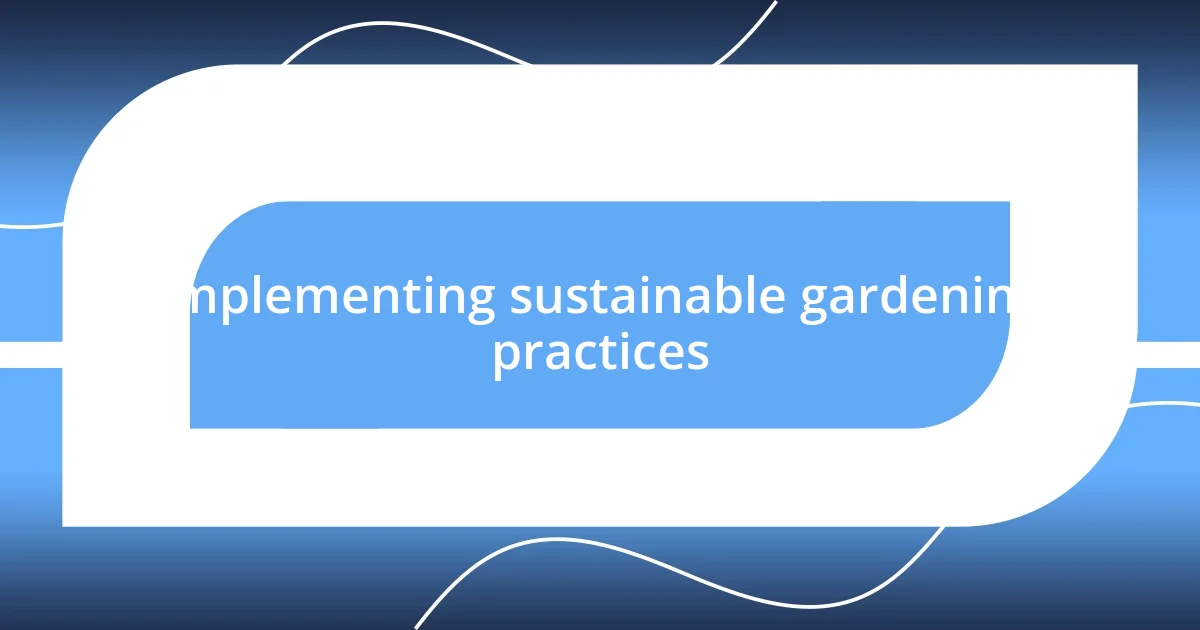
Implementing sustainable gardening practices
Sustainable gardening practices are all about creating a harmonious balance between beauty and ecology. I remember the satisfaction I felt when I swapped chemical fertilizers for compost; watching my plants thrive with natural nutrients was incredibly rewarding. Have you ever noticed how vibrant a garden can look simply by nurtured soil? It’s like giving your plants a body full of wholesome food instead of junk!
One of the best practices I adopted was implementing rainwater harvesting. I installed a rain barrel, and it turned into a game-changer for my garden during dry spells. I still recall that first time I used the collected water to nurture my new flower beds; it felt like recycling nature’s gift right back into my garden. Plus, I couldn’t help but feel proud knowing I was conserving water, which is vital for our natural ecosystems.
Mulching is another fantastic way to support sustainable gardening. Not only does it help retain moisture in the soil, but it also suppresses weeds. I found myself layering organic materials like straw and leaves; the transformation made my garden not just practical, but also aesthetically pleasing. I often question others: who knew that beauty could also resonate with eco-friendly practices? It’s a win-win situation that benefits both my garden and the environment.
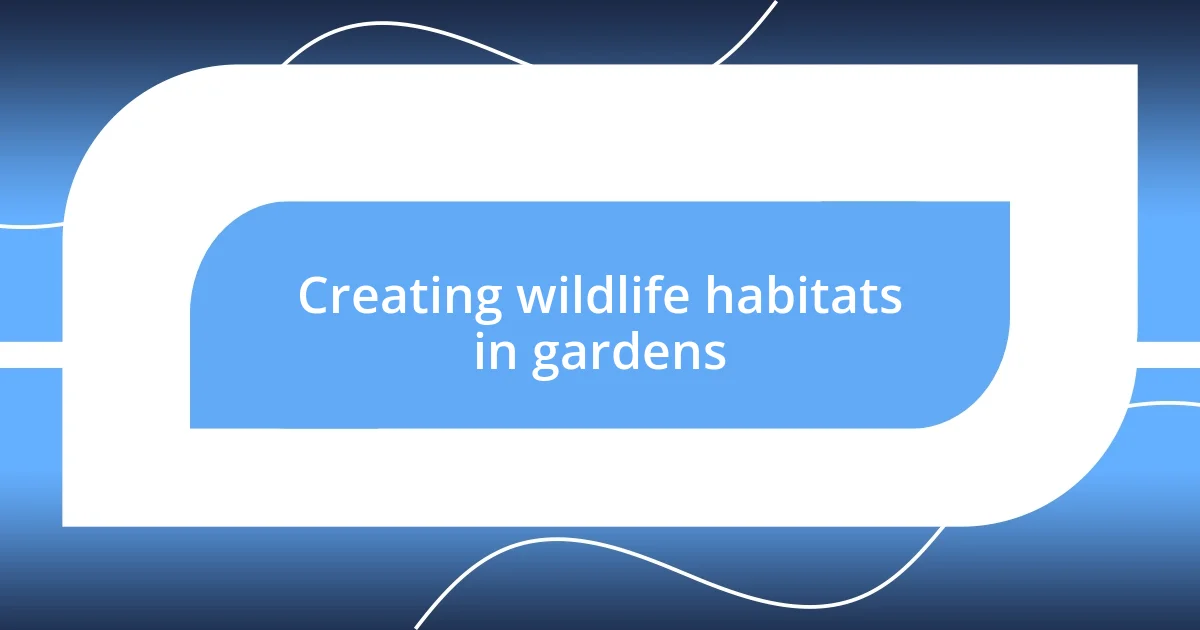
Creating wildlife habitats in gardens
Creating wildlife habitats in gardens is an exciting journey that opens up a world of biodiversity right at your doorstep. I remember when I built my own little pond; the moment frogs began to visit was like a scene out of a nature documentary! It felt magical to see them leap joyfully from lily pad to lily pad, and it made me realize the profound impact a small water feature can have on attracting local wildlife.
One approach I’ve found invaluable is incorporating natural shelter through dense plantings and brush piles. It’s fascinating how a simple tangle of branches can provide a sanctuary for birds and small mammals. When I noticed a family of rabbits making their home in one of my brush piles, I felt an overwhelming sense of connection to nature. Doesn’t it make you wonder how many creatures are living right under our noses, just waiting for a safe space to thrive?
I also took to heart the significance of having diverse plant layers in my garden. By planting a mix of trees, shrubs, and ground cover, I created a multi-level habitat that attracts various species. The joy of watching a woodpecker tap in my old oak tree or spotting bees buzzing around my flowering plants is genuinely rewarding. Have you ever stopped to consider how your garden can be a refuge for wildlife, too? It’s a relationship that cultivates not only beauty but a critical support system for our local ecosystems.
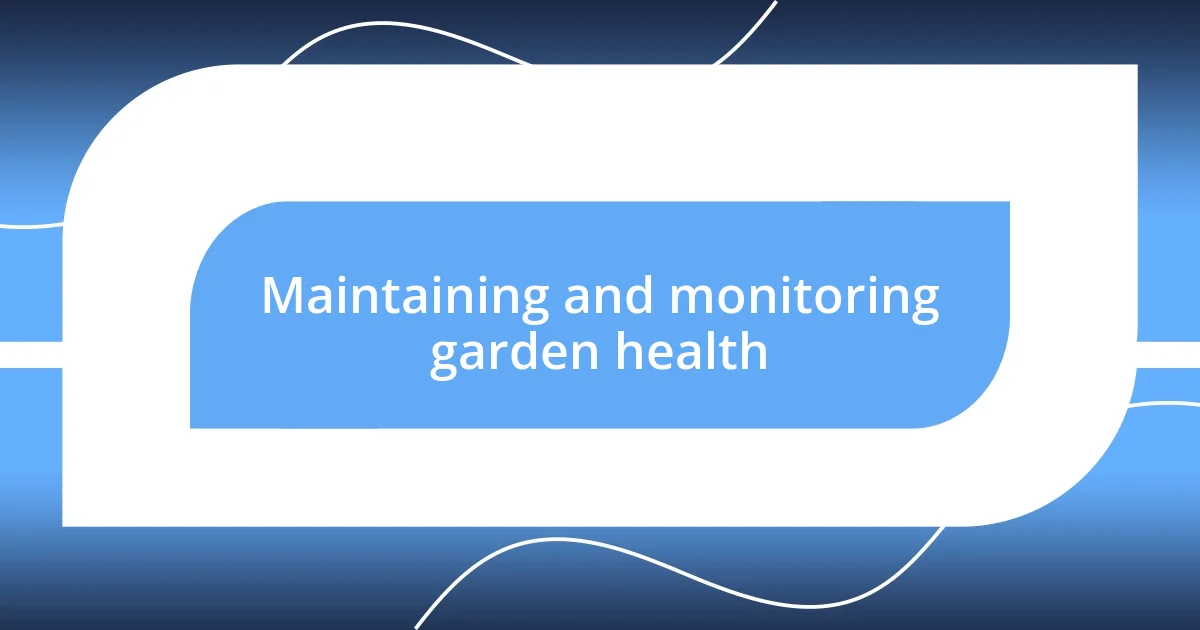
Maintaining and monitoring garden health
Maintaining garden health requires regular observation and a proactive approach. I remember the first time I noticed signs of distress in my plants; a few leaves were yellowing, and it sent me into a mini-panic! I learned that conducting regular check-ups—like inspecting for pests or irregularities—helps catch issues before they escalate. Have you ever experienced that moment when a simple observation saved your plant from decay? It’s empowering!
One method I found particularly effective is keeping a garden journal. I jot down everything from the watering schedule to pest sightings. Having this record not only helps me stay organized, but it also provides insights into the patterns of my garden. I can’t tell you how satisfying it is to look back and identify which times of year plants thrive or struggle. It’s like piecing together a puzzle, and each entry connects me more deeply to my garden’s rhythms.
I also embraced the practice of soil testing to ensure a healthy growing environment. When I first tested my soil, I was surprised by the results; it turned out my nutrient levels were off balance! Armed with this knowledge, I tailored my amendments accordingly. The difference was astounding—my plants not only recovered but flourished in ways I hadn’t anticipated. Have you thought about the quality of your soil? It truly is the foundation of a thriving garden.
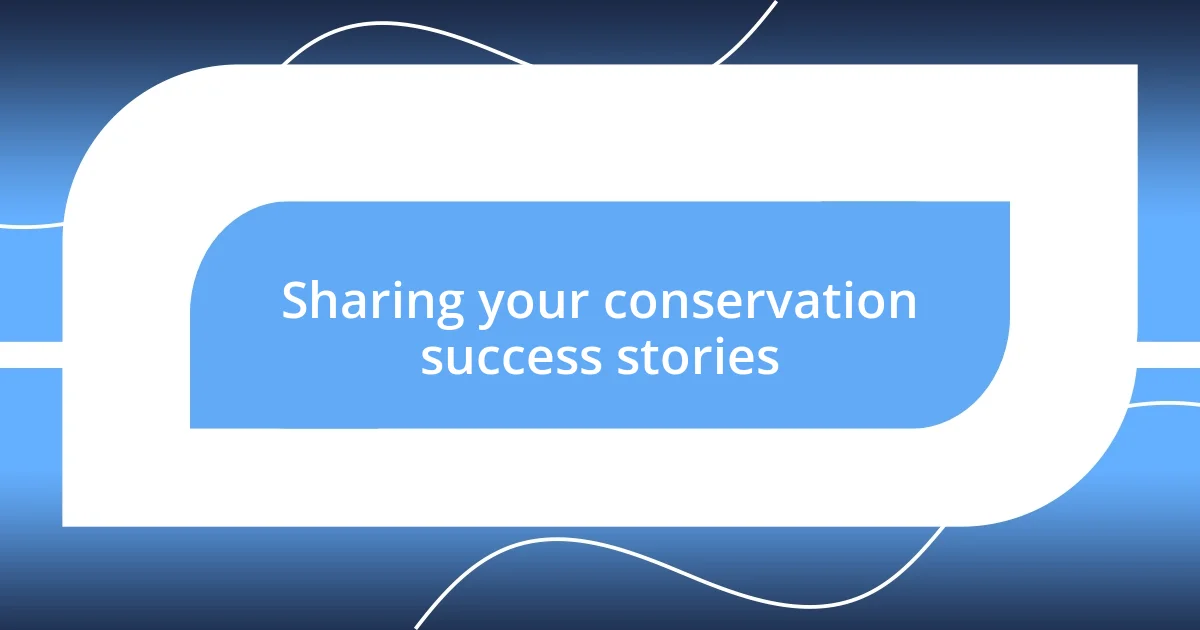
Sharing your conservation success stories
Sharing your conservation success stories can not only inspire others but also create a vibrant community of like-minded individuals. I remember the day I hosted a small gathering to showcase my garden transformations. Watching my friends’ eyes light up as they discovered a swarm of butterflies enjoying the nectar made me realize the power of sharing not just the pictures, but the experiences behind them. Have you ever felt that rush of pride when someone admires what you’ve created? It’s contagious!
Another impactful moment was when I decided to document my journey on social media. I started sharing before-and-after photos, alongside tips that had worked for me. To my surprise, people began reaching out, sharing their own stories and asking for advice. It was heartwarming to witness how one post could ripple out, connecting us in our love for nature. Have you thought about how your efforts can encourage someone else to take that first step towards conservation?
Finally, I’ve participated in local conservation events where I shared my experiences firsthand. Hearing others share their journeys created an atmosphere of learning and collaboration. I realized that every garden story contributes a piece to the larger narrative of environmental stewardship. Isn’t it incredible to think that your garden might ignite someone else’s passion for conservation?












